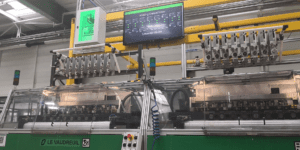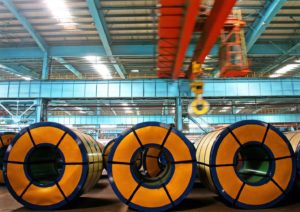The other day it occurred to me that I’ve actually spent more than half of my life living in the United States. I was thinking about my time as a young PLC systems engineer in the United Kingdom. Late one Friday night, I came back from a site to the office to find my boss’s office light still on. He said the words which basically changed the course of my life, “We need you in the States. Can you leave Monday?” Our company had been awarded a large contract with one of the world’s largest companies, and a technical team was now needed to execute it.
One of the first times I visited this customer, I remember being in awe of their large technical center and the high degree of ‘computerization’ they employed. This was in the days before PCs and their clones took over the small computer market, when manufacturing recipes, alarms and production throughput were managed by ‘main frame’ computer systems. These systems would receive orders from the company’s distribution network, and then automatically pass information to the process automation system so these systems knew what to build and when. Manufacturing status could be monitored from any of the fixed terminals in the plant. Well, it could if you had a user name, password and could interpret the large quantity of numerical data to make sense of it.
The goal of my first visit was threefold:
- Help the computer group wire up to our proprietary communications network (we published documentation but, well, you kind of needed to know).
- Help them understand how our protocol converter software worked. We had our own protocol (and we were totally convinced it was better than anybody else’s).
- Write logic to control data transfer. Handshaking was needed to handle this cryptic data passed between the computer system, and PLC.
So, fast forward 30 years and enter the world of Big Data, The Internet of Things (IoT), and hand-held access to more information than you can shake a stick at. All this seems pretty funny, or at least it would if ARC didn’t provide that well known statistic that three quarters of manufacturing plants are more than 30 years old. Many control systems have been upgraded but some still have the shortcomings of proprietary networks and protocols. Just like the systems I worked on all those years ago. The IoT is fine but all those THINGS need to be on the web and the data must be accessible by any supervisory device which needs it. One first needs to get to that Big Data before analyzing it and turning it into usable business intelligence.
In order to take full advantage of the potential benefits, the older devices simply have to go. The journey to the new world of data transparency and fact-based productivity requires ‘Intelligent Modernization’. If you would like to learn more about this topic, check out the article in Control Engineering magazine here.



